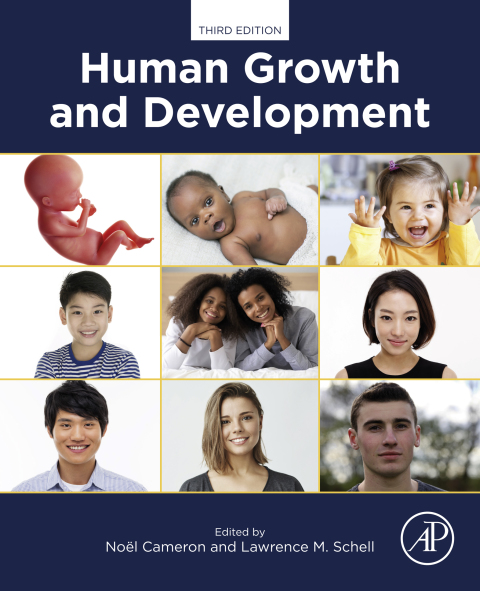Description
Efnisyfirlit
- Cover image
- Title page
- Table of Contents
- Copyright
- Dedication
- Contributors
- Acknowledgments
- Introduction
- Using this book
- The Lecturers
- Chapter 1. The pattern of human growth
- Introduction
- Historical background
- The distance curve of growth
- The velocity growth curve and growth spurts
- Other patterns of growth
- Growth versus maturity
- The control of growth
- Growth reference charts
- Canalization
- Catch-up growth
- Summary and conclusions
- Chapter 2. Prenatal and infant growth
- Introduction
- Periods of gestation
- Assessing growth during pregnancy
- Factors affecting fetal growth
- Birth
- Infant growth
- Chapter 3. Child and juvenile growth
- Introduction
- Characterizing physical growth during childhood
- Physiology of childhood growth
- Environmental factors associated with childhood size
- Childhood growth and long-term health
- Summary
- Chapter 4. Adolescent growth
- Introduction
- The adolescent growth cycle
- Tempo of growth
- Growth modeling and biological parameters
- Individual versus average growth
- Sex differences in growth
- Summary
- Suggested reading
- Chapter 5. Puberty
- Introduction
- The neuroendocrinology of puberty
- Upstream factors influencing pubertal timing
- Downstream consequences of pubertal activation of the hypothalamic–pituitary–gonadal axis
- Summary
- Chapter 6. Endocrine control of growth
- Overview of the endocrine system, hypothalamic-pituitary-gland axes, hormones relevant to growth
- Growth hormone (GH) and insulin-like growth factor 1 (IGF-1)
- Fetal, infancy, childhood, and adolescent endocrine controlled growth characteristics
- Growth disorders characteristics, diagnosis and treatment
- Assessment of growth in clinical scenarios
- Chapter 7. Nutrition and growth
- Introduction
- Basic concepts
- Assessment of nutritional status during childhood and adolescence
- Nutrition and growth
- Malnutrition
- Summary
- Annotated Bibliography
- Chapter 8. The genetic epidemiology of growth and development
- Introduction
- Statistical genetic terms and concepts
- Study designs
- Studies of the genetics of growth and development
- Summary
- Chapter 9. Social and economic effects on growth
- Introduction
- Two types of variation of anthropometric traits caused by social factors
- Social gradients in height of conscripts
- Social gradients in growth of school children
- Social gradients in menarcheal age
- Mode of action of social factors on biological features
- Are social gradients of height in the Polish population partly genetic?
- The role of inequality in society
- Concluding remarks
- Chapter 10. Environmental effects on growth
- Introduction
- Research design issues
- Temperature and climate
- Season
- High altitude hypoxia
- Pollutants
- Social and economic influences on postnatal human growth
- How do we interpret differences in growth related to environmental factors?
- Conclusion
- Chapter 11. The measurement of human growth
- Introduction
- The context of measurement; screening, surveillance and monitoring
- VIMAR: validity, instrumentation, minimum unit of measurement, accuracy, reliability
- Frequency of measurement
- Measurements
- Surface landmarks
- Chapter 12. Assessment of maturation
- Introduction
- Initial considerations
- Methods of assessment
- Summary
- Chapter 13. Modeling growth curves for epidemiology
- Finding the curve
- Multilevel growth curve models
- Growth mixture models
- Concluding remarks
- Chapter 14. Growth references and standards
- Introduction
- Defining the reference population
- Drawing the sample
- Collecting the data
- Cleaning the data
- Estimating distance centiles
- Variants of the distance chart
- Visualizing the curves
- Charting velocity
- Conditional references
- Designing and printing the chart
- When to replace
- Electronic growth charts
- Conclusions
- Chapter 15. Evolution of human growth
- Introduction: evolution of human maturation
- Anthropology: evolutionary approach
- Fossil evidence
- Concluding thoughts
- Chapter 16. Early environments, developmental plasticity, and chronic degenerative disease
- Introduction
- Developmental origins of health and disease: evidence and mechanisms
- Developmental plasticity as a means of adaptation
- Implications of developmental programming for social health disparities
- Conclusion
- Chapter 17. Physical activity and growth
- Definitions of physical activity/sedentary behavior
- Physical activity and health and wellbeing
- Physical activity guidelines
- Measurement of physical activity
- Correlates
- Physical activity and chronological age
- Growth, development and physical activity
- Biological maturity and growth-related injury risk
- Emerging areas
- Conclusion
- Chapter 18. Biological models of human growth
- Introduction
- Human growth: building a body is a cellular job
- Saltation and stasis: how children grow
- A paradigm shift in growth models
- The emergence of the saltation and stasis model
- The biology of saltatory growth: the model and the evidence
- Saltation and stasis: an integrated model of growth
- Summary
- Chapter 19. Body composition during growth and development
- Introduction
- Basic concepts
- Methods
- Body composition and growth
- Body composition in health and disease
- Summary
- Index







Reviews
There are no reviews yet.